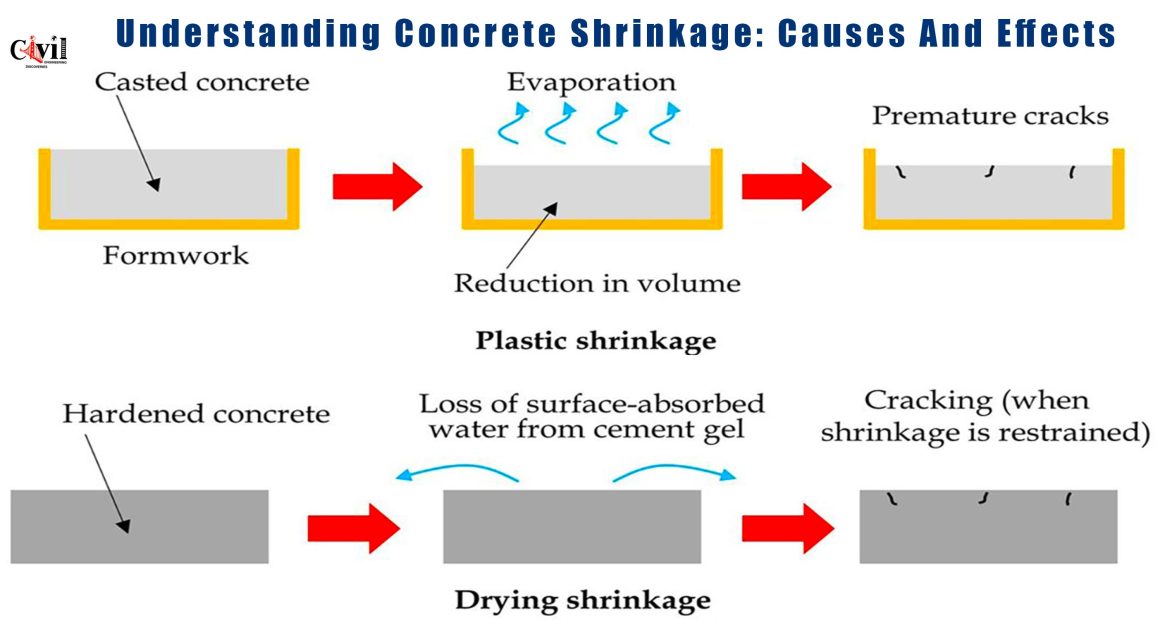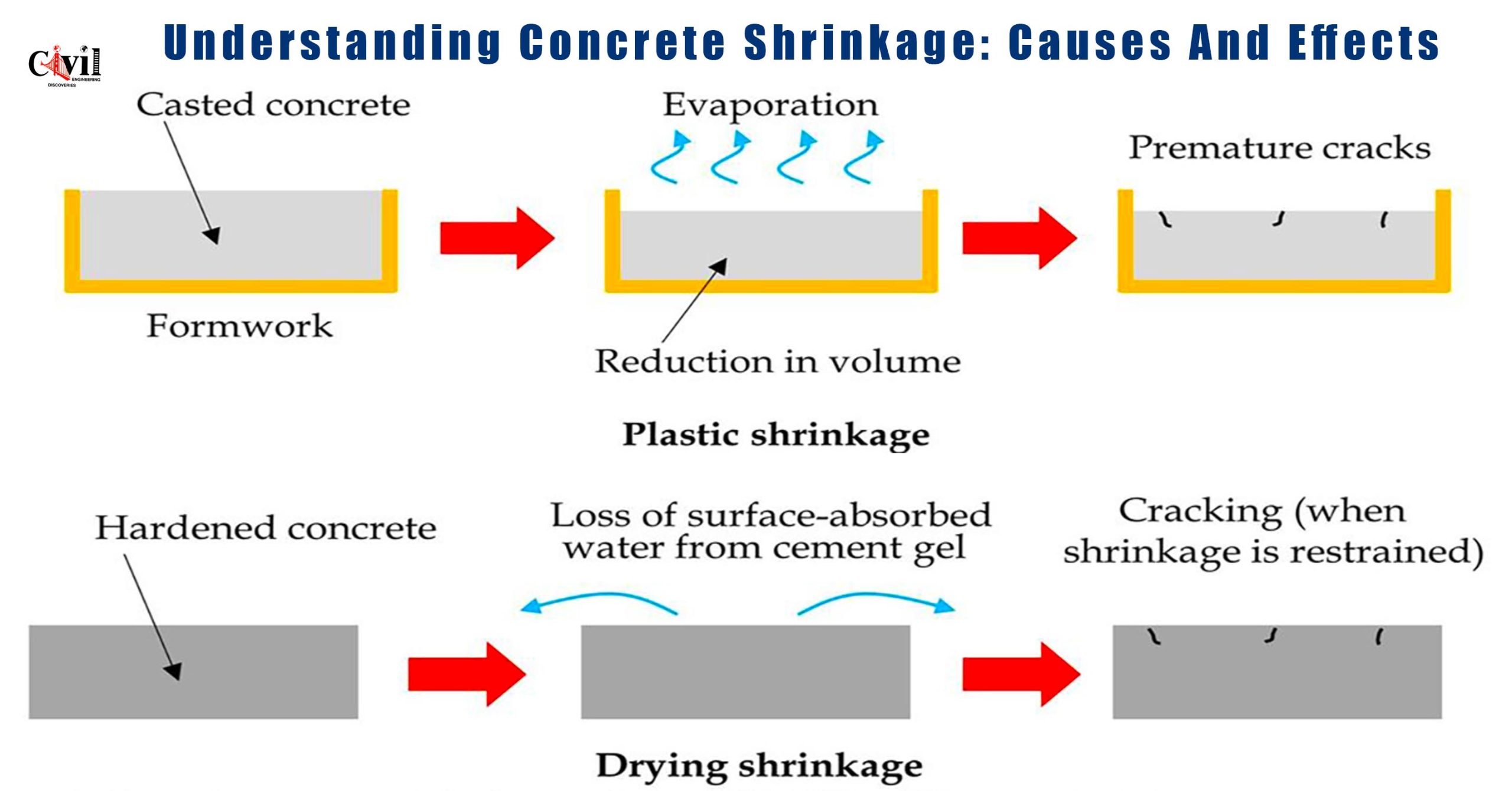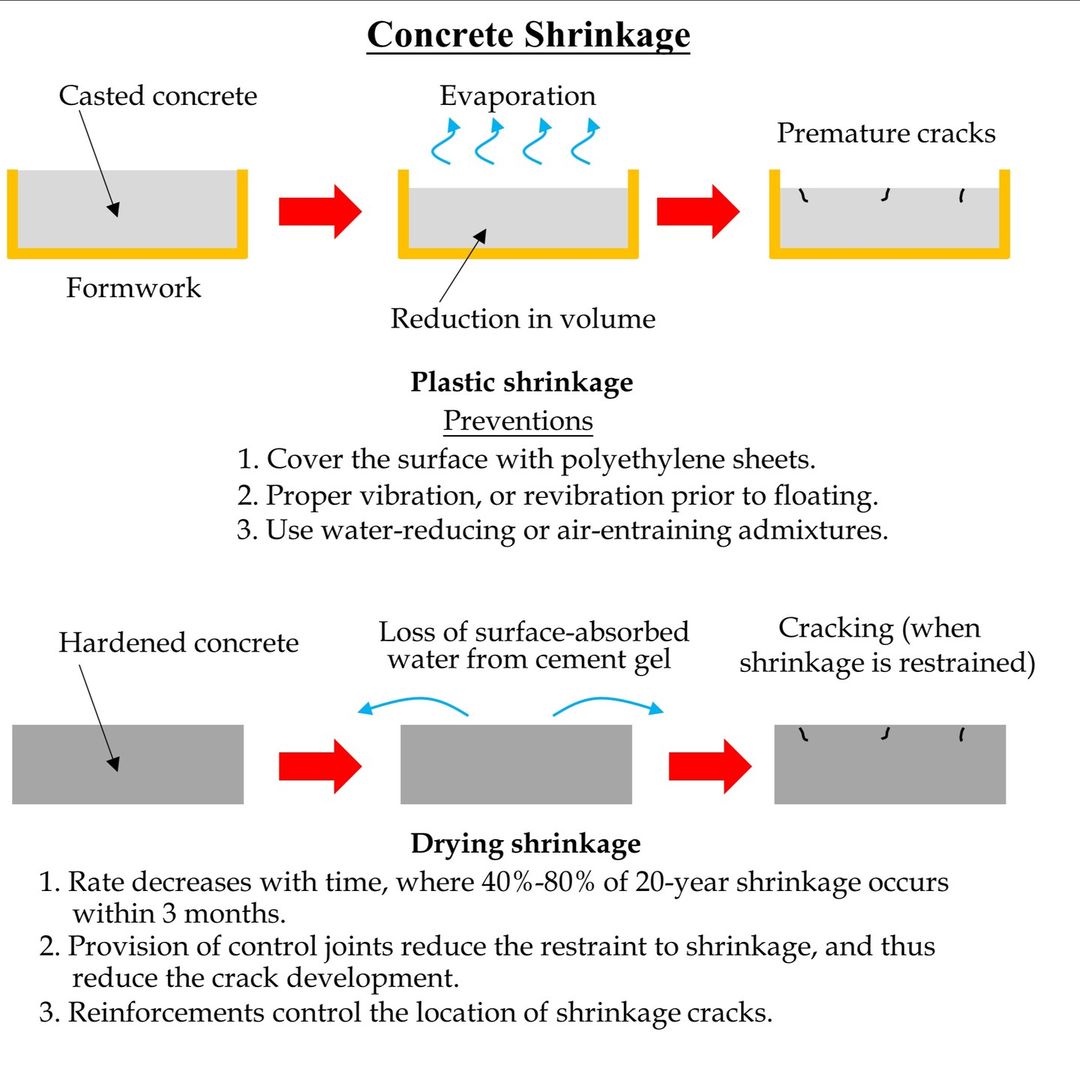Concrete shrinkage is a natural process that affects the durability and structural integrity of concrete. There are two primary types of shrinkage in concrete: plastic shrinkage and drying shrinkage. Each occurs at different stages of the concrete’s life cycle and results from different causes. This article will explain these types, their causes, and how they affect concrete structures.
What is Concrete Shrinkage?
Concrete shrinkage refers to the reduction in the volume of concrete over time. It typically happens due to the loss of water or settlement of solid materials within the concrete mixture. Shrinkage is common in many concrete structures and can lead to cracks if not properly managed.
Plastic Shrinkage in Concrete
Plastic shrinkage occurs when concrete is still in its plastic state, meaning it’s freshly cast and hasn’t yet hardened. Structures like slabs and pavements, which have large surface areas, are particularly prone to this type of shrinkage.
Once the concrete is poured, water begins to evaporate from the surface. This evaporation results in a reduction in the volume of the cement-water system, causing cracks to form prematurely. These cracks can weaken the structure and reduce its lifespan if not addressed promptly.
Causes of Plastic Shrinkage
Plastic shrinkage is primarily caused by rapid water loss due to evaporation. This happens when there are unfavorable environmental conditions, such as high temperatures, low humidity, or strong winds, that speed up evaporation.
Drying Shrinkage in Hardened Concrete
As concrete hardens, it undergoes a different type of shrinkage known as drying shrinkage. This occurs over an extended period and is caused by the loss of water from the cement gel, as well as hydrostatic tension in the tiny pores of the hardened material.
Unlike plastic shrinkage, which happens quickly, drying shrinkage is a gradual process. Over time, the rate of shrinkage slows down, but the effects can still lead to cracks, especially when the concrete is restrained from shrinking uniformly.
Causes of Drying Shrinkage
The primary cause of drying shrinkage is the loss of water in hardened concrete. When the concrete’s surface-absorbed water evaporates, the material begins to contract. As the water in the tiny pores disappears, internal stress builds up, contributing to cracks.
How Shrinkage Impacts Concrete Structures
Shrinkage, whether plastic or drying, can negatively impact the structural performance of concrete. Cracks resulting from shrinkage can lead to reduced durability, increased permeability, and potential structural failure over time. Therefore, managing shrinkage during and after the curing process is essential to maintaining the quality and longevity of concrete structures.
Preventing and Minimizing Shrinkage
To prevent plastic shrinkage, it’s crucial to control water evaporation by using proper curing techniques, such as covering the concrete or using curing compounds. For drying shrinkage, reducing the water-to-cement ratio and using shrinkage-reducing admixtures can help minimize the effects.
Conclusion
Both plastic and drying shrinkage can compromise the integrity of concrete structures if not properly managed. By understanding their causes and taking preventive measures, builders can ensure the longevity and durability of their projects.
Click Here To See Ultimate Bearing Capacity Of Shallow Foundations: A Comprehensive Guide







